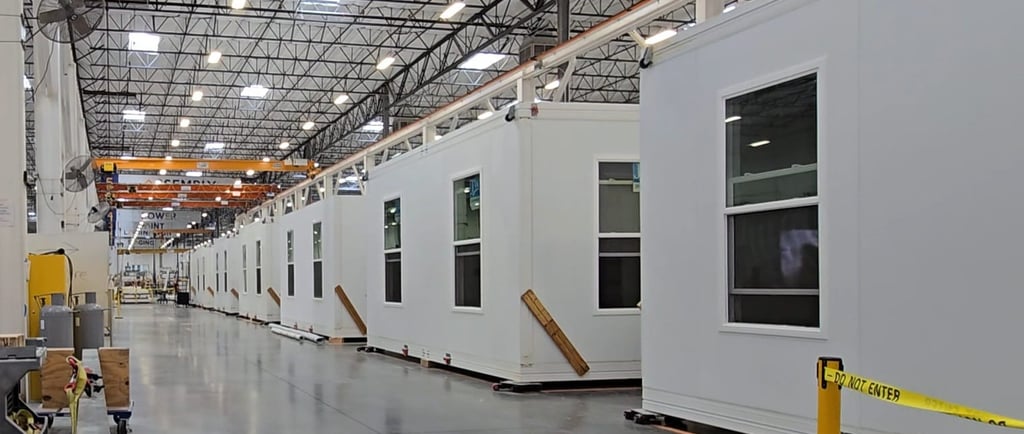Can Homes Be Built Like Cars? Highlights from the tour of Boxabl's Factory 1 in North Las Vegas, Nevada, USA. Q1 2025.
Modular housing continues to gain momentum, with North American market share projected at 4–5% in 2024 — reflecting a decade of strong growth. But are we approaching the tipping point for modular adoption, or is the industry’s transformative shift still on the horizon?


Can Homes Be Built Like Cars?
Boxabl’s ambitious vision is to produce homes with automotive-level efficiency — aiming to assemble a home every 90 minutes.
Earlier this year, Boxabl extended an invite to tour their Factory 1 in North Las Vegas, Nevada, USA.
At the core of Boxabl’s innovation are factory-built, foldable modular units like the Casita — a 361 sq ft home featuring pre-installed utilities, designed for rapid on-site setup within a single day.
Boxabl’s approach uniquely leverages:
Advanced Materials:
Using light-gauge steel, magnesium oxide panels, and EPS insulation, Boxabl delivers fire-resistant, energy-efficient, and highly durable structures.
Foldable Shipping Design:
Units collapse to an 8.5 ft width, enabling standard highway transport without special permits and significantly reducing costs.
Plug-and-Play Setup:
Homes arrive with pre-installed plumbing, electrical systems, HVAC, and fully equipped kitchens and bathrooms, allowing streamlined assembly upon delivery.
Factory Precision:
Controlled manufacturing ensures consistent quality and sharply reduces construction defects common in site-built homes.
Scalable Automated Production:
Factory 1 targets a rate of one home every 90 minutes; the planned Factory 2 aims to accelerate output to one home every 20 minutes.
In 2025, Boxabl launched Phase 2, introducing stackable modular units designed for larger homes and apartment complexes.
Market Context
The U.S. faces a housing shortfall of approximately 3.8–5.5 million homes.
Canada’s shortage ranges between 1.8–3.5 million homes, with the Canada Mortgage and Housing Corporation (CMHC, 2023) underscoring the urgent need for 3.5 million additional units by 2030 to restore affordability.
Boxabl’s innovative, automotive-inspired manufacturing model demonstrates that building homes like cars is technically feasible. However, regulatory complexity, customization demands, and infrastructure readiness suggest that widespread adoption may still be years away.
Modular housing continues to gain momentum, with North American market share projected at 4–5% in 2024 — reflecting a decade of strong growth. But are we approaching the tipping point for modular adoption, or is the industry’s transformative shift still on the horizon?




